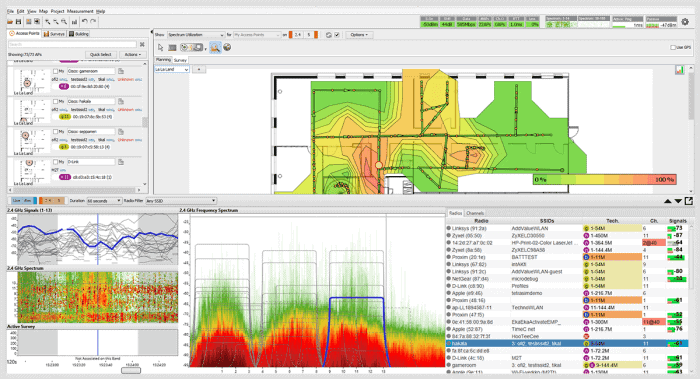
What is WIFI 6E?
Wi-Fi 6E extends the existing Wi-Fi 6 (802.11ax) standard and enables access to the new 6 GHz band. Wi-Fi 6E takes Wi-Fi 6's efficient features, such as OFDMA, WPA3, and Target Wake Time, and applies them to the 6 GHz band to provide more contiguous spectrum and reduce interference. With Wi-Fi 6E, enterprises can address new use cases requiring multi-gigabit speeds, such as high-definition video.
How does Wi-Fi 6E work?
Today, Wi-Fi uses two frequency bands: 2.4 GHz and 5 GHz. Wi-Fi 6E uses a third frequency band: 6 GHz. Wi-Fi 6E extends the capabilities of Wi-Fi 6 to 6 GHz to achieve greater efficiency, higher throughput, and enhanced security.
Why Wi-Fi 6E?
- More capacity in the 6 GHz frequency band eliminates connection and congestion problems.
- Wider channels of up to 160 MHz are ideal for HD video and VR.
- No interference from microwaves, etc., as only 6E-capable devices can use the frequency band.
Which device classes does Wi-Fi 6E support?
- Standard Power AP (SP-AP): Supports indoor and outdoor operation, where SP-APs are coordinated via AFC (Automated Frequency Coordination Service) to avoid interference from 6 GHz Wi-Fi with established services, such as public safety facilities and cellular backhaul, microwave links, satellite services, and TV broadcast services.
- Low-Power Indoor AP (LPI-AP): This fixed, indoor-only class uses lower power levels and does not require AFC. LPI-APs for indoor enterprise deployments offer the same coverage as today's Wi-Fi 6 APs and will provide similar 6 GHz coverage to today's 5 GHz radios.
- Very Low Power AP (VLP AP): VLP APs enable mobile indoor and outdoor use via mobile clients for use cases such as small cell coverage, hotspots, etc.
Our planning and coverage already takes Wi-Fi 6E/6 GHz into account
Of course, we can only provide reliable and sound Wi-Fi planning based on precise building or construction plans, graphics, or our own measurements in the respective buildings or areas. Before we can begin planning your individual Wi-Fi infrastructure, such plans with the actual lengths and heights are essential, as they are a key component for the high accuracy of the survey. The information we need prior to conducting a Wi-Fi survey is also a visual representation of the desired Wi-Fi areas and your precise expectations.
Understanding your goals together.
We will also discuss with you:
- What is your Wi-Fi network used for?
- What WLAN capacity is required?
- Are there any requirements regarding company-wide (IT) compliance or other legal requirements?
- Is it a manageable number of emails or a few documents, or a control of several hundred printers and scanners?
- Or are we already moving into the area of Voice over IP or campus-like requirements with thousands of end devices?
- We will also discuss with you what number of users and devices you can expect.
We would be happy to advise you individually on the integration of future Wi-Fi 6E / 6 GHz networks in your company.



Split:
Implementing the DigitalPact School – what is important now?
MSP fail-safe internet connection